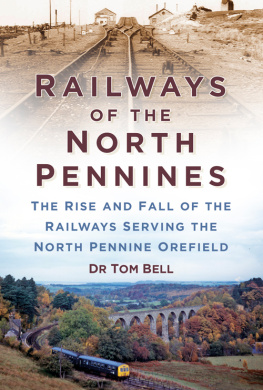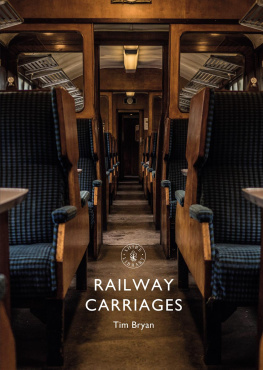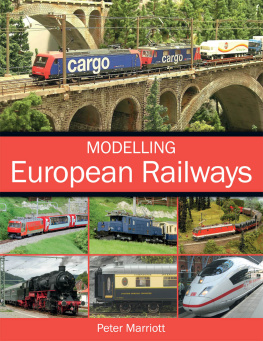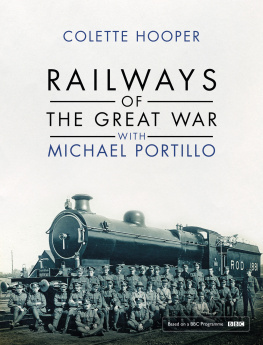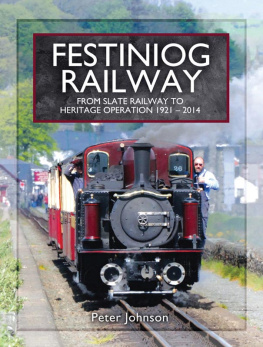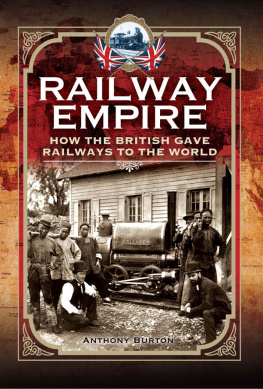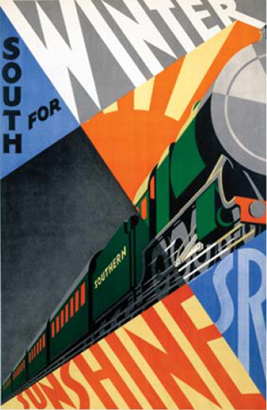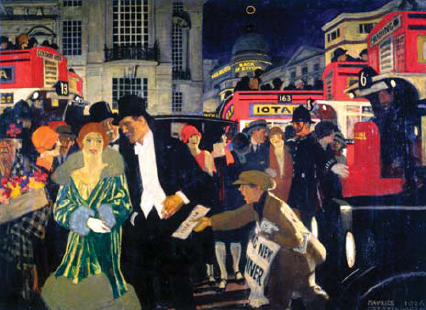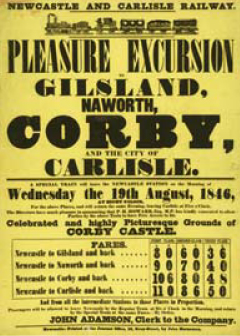RAILWAY POSTERS
Lorna Frost
SHIRE PUBLICATIONS
South for Winter Sunshine by EdmondVaughan, 1929, was described by the Railway Gazette as curious, but its striking modern composition is very effective.
CONTENTS
The original painting for the London Midland & Scottish Railway poster London by LMS, Piccadilly Circus by Night, 1926, by Maurice Greiffenhagen RA.
Dukeries Route, Lancashire Derbyshire & East Coast Railway, 1897. The route opened to passengers in 1897, although the planned extension to Sheffield (shown in the poster as a dotted line) was never completed beyond Beighton.
THE ESTABLISHMENT OF RAILWAY ADVERTISING
R AILWAY POSTERS have an enduring appeal that captures the imagination. They carry us off to faraway places of stunning landscapes and sandy beaches. They tell a story of luxurious travel, stylish couples and happy families. Railway posters throughout their history sell us a fantasy that we all want to believe in, but they also tell us something about the social, cultural and industrial developments of their time. The geographical expansion of the railways is shown in elaborate maps. Their architectural feats are beautifully and intricately observed in order to show their advancing infrastructure and facilities. A new-found freedom to travel, the emergence of the leisure industry, and the railways influence on the growth of towns and resorts all over the United Kingdom are all evident in the imagery of the poster. Railway companies encouraged city breaks and travel abroad as well as in Britain; they advertised their own shipping and air services and published stylish images of modern locomotives designed to compete with increasing road traffic.
The birth of the railway poster was, however, somewhat less glamorous. It began with simple typeset notices and handbills, and it took almost to the end of the nineteenth century for railway poster advertising to make any real advancement in style.
The first advertising notices were produced in the 1820s and 1830s to herald the opening of new passenger railways across Britain. From the opening of the Stockton & Darlington Railway in 1825, letterpress notices were produced to announce the establishment of new lines, and then to give information on timetabling. The posters were similar to those made earlier by the stagecoach companies and were intended to be informative rather than persuasive or artistic. Notices were aimed at people who already planned to travel, and their designs were crowded with text and difficult to read, complicated by a variety of different typefaces. The notices were functional, put together by printers using standard blocks, and setting out departure and arrival details and information about fares. While these often contained no images, many others featured woodcuts of generic engines or carriages. These were not necessarily accurate representations of the rolling stock used on the line being advertised; the same blocks were used for several different companies and were often many years out of date, but nonetheless they were a cheap and effective way to enliven the notices.
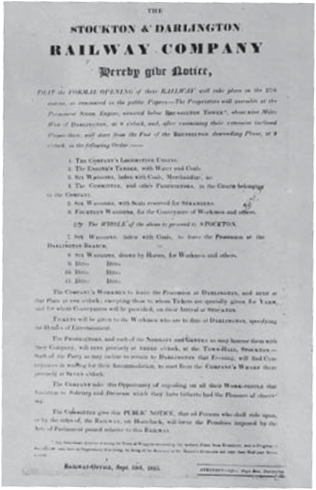
Notice of the opening of the Stockton & Darlington Railway Company, 19 September 1825.
Further poster advertising was generated in the 1840s and 1850s when companies began running excursion trips in addition to their regular timetabled services. In 1841 Thomas Cook, founder of the famous travel agency, arranged his first excursion train with the Midland Railway, and such trains subsequently became very popular for days out at weekends and bank holidays. As well as running to seaside resorts and race meetings, special trains were put on for big events such as the Great Exhibition in 1851. Many poorer people could not normally afford rail travel, but reduced excursion rates allowed them to take day trips to special events. The economist Douglas Knoop, in Outlines of Railway Economics (1913), stated that The primary object of excursion fares is to induce people, who would otherwise not do so, to travel by rail, and to encourage those such as would travel a little to travel more. Posters for these excursions followed the same style as the early handbills, presenting a jumble of information.
An 1845 poster for the London & Dover Railway shows how travel abroad had also become easier as railway companies opened up shipping links to the Continent. The London & Dover Railway (part of the South Eastern Railway Company) opened routes to Calais, Boulogne and Ostend via Dover and Folkestone in February 1844. Passengers travelled to the coast by rail before joining one of the regular steamer services across the Channel, and then journeyed on to Paris and other Continental destinations. Paris could then be reached from London in twenty-four hours, as opposed to several days in a horse-drawn coach.
This 1846 notice advertises a pleasure excursion on the Newcastle & Carlisle Railway, using standard printers illustrations to catch the viewers eye.
The poster used engravings in a circular frame around the text to represent the speed and convenience of travel between London and Paris achieved with the new technology. It features the London Bridge railway terminus, a locomotive and carriages, the cliffs of Dover and the English Channel. This was a progression from the old stagecoach-style notices and introduced an element of design by using the text in a roundel with radiating spokes, and adding the pictorial component. Like other railway advertising of its day, it still aimed to convey its message predominantly through text rather than image, which was confined to the edges. As well as issuing poster advertising, the company published an illustrated guide to its services giving advice on various aspects of travel. This included key attractions and facilities of the towns served, train and steamer times and fares, and information on obtaining a passport.
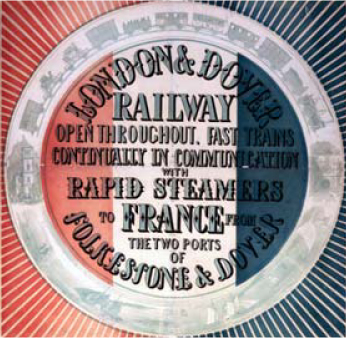
Engravings illustrate the route from London to the Continent in an effort to convey how quick, easy and convenient the journey had become. c.1845.
Leisure, landscape and outdoor activities were early themes for railway advertising, and most posters showed scenic images of lakes, valleys and the countryside. Towards the end of the century, as competition between companies reached its peak, the railways began to increase the comfort of their services, as well as their speed. This was a necessary development because of the long distances being travelled and the additional time required for refreshment stops. Corridor trains with toilets allowed these stops to be cut, sleeping cars were introduced, and in 1879 the Great Northern Railway (GNR) introduced the first dining car for first-class passengers. These additional services were promoted in the hope of securing new passengers, although the style of the posters changed little.


